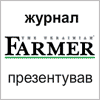Efficiency of the scale and further development of agrarian companies

The purpose of the state policy for the sustainable development of Ukrainian agriculture is to ensure the growth of agricultural production and the welfare of the rural population.
The last decades Ukraine has been showing a growth of agricultural production due to institutional changes, the processes of capitalization, globalization and European integration that led to multistructured agriculture with concentration processes. According to the release of the State Statistics Committee and to the "Ukraine Macroeconomic Situation – October 2019" analytical report provided by SigmaBleyzer, in the second quarter of 2019, real GDP grew by 4.6% yoy, compared to a 3.8% yoy in the second quarter of 2018. The mayor sources of GDP growth were gross capital formation, with a growth rate of 7.9% yoy, and household consumption, with a 11.8% yoy growth rate. The growth of GDP for the year is now expected to be 3.3%. On the supply side of GDP, in the second quarter of 2016, among the sectors that showed the highest recovery were agriculture, forestry & fishing (7.3% yoy). High-frequency data shows that Ukraine's economic activity has continued to improve.
Increased role of capital in agricultural production cannot be described just in terms of the expansion of farms' scales, but also with consideration of different forms of using resources and organization of production. The development of agribusiness of Ukraine in the conditions of the impact of global market transformation is characterized by the retirement from the concept of individual farms to the growth of agriholdings. This process is particularly determined by the scale effect that can be completely achieved in large-scale companies. On the other side, the Government of Ukraine developed the Strategy for small and medium-sized enterprise development in Ukraine until 2020. This Strategy determines that small and medium-sized enterprise sector contributes to creation of new jobs, growth of the Gross Domestic Product, and development of the competitiveness and innovative potential of the national economy. But is this approach, which based on the small and medium enterprises, is not substantiated enough for agribusiness. The Strategy also describes problems that need to be solved. Among them are poorly coordinated government policies in the sphere of business development; lack of interaction between central and local executive authorities and local governments with regard to solving current problems faced by small and medium-sized businesses; limited investments in export-oriented entities; limited access to resources (financial, property, natural, etc.) by small and medium enterprises.
The Law of Ukraine "On Development and State Support of Small and Medium-Sized Businesses" defines legal and economic principles of the state policy on small and medium-sized enterprise sector support and development. In addition, this Law amended the Commercial Code of Ukraine, according to which businesses are divided into micro, small, medium and large businesses based on the number of employees and annual income from all business operations. These definitions partially comply with the legislation of the European Union in the part pertaining to the criteria of number of employees and annual income from any activity, but it does not include the third criterion, the balance sheet. Given a significant depreciation of the national currency, small and medium-sized enterprise sector distribution based on the above-mentioned criteria has changed. In our point of view, in agriculture, especially in Ukrainian circumstances, one of the main criteria of size of enterprises is the land bank.
But acreage alone is not the basis for redefining large-scale, medium-scale and small-scale farming. We may have large-scale farming on twenty acres, but have small-scale farming on two hundred acres. The definition and the classification should be based on the general character of the business unit known as the farm, with the labor supply as the principle ingredient.
It should be noted that the returns to scale is considered as a long-term concept that reflects how the size of production changes when all inputs are proportionally increasing. Constant returns to scale is a situation when a proportional increasing of all inputs leads to the same proportional increasing of outputs. Increasing returns to scale is when the proportional increasing of all inputs leads to more than proportional increasing of outputs. Decreasing returns to scale occurs when the proportional increasing of all inputs leads to less than proportional increasing of outputs.
The type of return on scale that an enterprise receives is influenced by a number of circumstances. It is suggested that small businesses are showing increasing returns to scale as they can benefit by attracting additional staff who specialize in certain tasks. In contrast to small businesses, declining returns may be inherent in large enterprises, which are unable to exercise close control over all links in the production process with extremely fast growing.
Thus, the summarized data on the efficiency of agricultural enterprises of Ukraine make it possible to argue that increasing size of agricultural enterprises, in particular their agricultural land, creates opportunities for improving productivity of resources, reducing the cost per unit of production, which is positive influences on the growth of production efficiency, namely the profitability of crop production. Therefore, there is a link between the size of the enterprise and the efficiency and effectiveness of production.
Nataliia Zarytska, Analytical department of UAC
| Attachment | Size |
|---|---|
| 5e7de839-4062-4332-b7c0-1a4b6b85c90b.jpeg | 68.61 KB |
- 23351 reads








